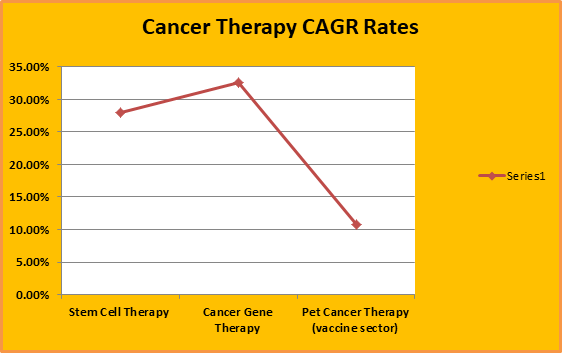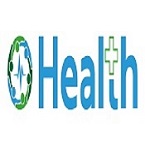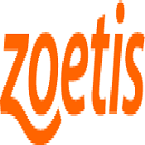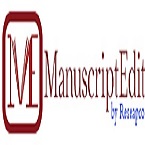Theme: Bioethics and Policy in Stem Cell Research and Next-generation Technologies in Regenerative Medicine
Stem Cell 2024
Conference Series invites all the participants from all over the world to attend 20th Global Summit on Stem Cell & Regenerative Medicine during June 27-28, 2024 London, UK which includes prompt keynote presentations, Oral talks, Poster presentations and Exhibitions.
Objective:
Stem Cell Congress 2024 has the stage to fulfill the prevailing gaps within the transformation of this science of hope, to serve expeditiously with solutions to all within the need. Stem Cell Congress 2024 will have an expected interest of 120+ delegates over the world to talk about the conference objective.
Success Story:
The victory of the Stem Cell Conference Series LLC Ltd has given us the prospect to bring the gathering in Paris, France. Since its graduation in 2011 Cell Science arrangement has seen around 750 analysts of extraordinary possibilities and extraordinary investigate presentations from around the world. Awareness of stem cells and its application is getting to be well known among the common populace. Parallel offers of trust include burdens to the analysts of Cell science, Stem cell due to the potential impediments experienced within the real-time.
Target Audience:
- Stem Cell Developers and Investigators
- Gene Therapy Researchers
- Genetic Scientist
- Regenerative Medicine Researchers
- Cell biologist
- Academic Professionals
- Anatomical Researchers
- Oncologists
- Neurologists
- Immunologists
- Ophthalmologists
- Pharmaceutical Industry professionals
- Business Entrepreneurs
- Drug Manufacturing Companies
Track 01 Tissue Engineering
Tissue engineering combines biological elements like cells and growth factors with engineering concepts and synthetic materials to create a new tissue. Human cells are seeded onto scaffolds, which can be comprised of collagen or a biodegradable polymer, to create substitute tissues. The scaffolds are then cultured in growth factor-rich media, which encourage the cells to divide and expand. The substitute tissue is created as cells expand across the scaffold. This tissue can be implanted into the human body, with thescaffold being absorbed or destroyed over time
Track 02 Dental Stem Cells
Dental stem cells / parent dental cells (collectively referred to as dental cells [DSCs]) are classified and comprised of dental pulp stem cells, stem cells from clear teeth, stem cells from apical papilla, periodontal ligament stem cell, and the ancestor of the dental follicle. cells. Common features of these cell numbers are the ability to regenerate themselves and the ability to divide multiple lines (multipotency). In vitro and animal studies have shown that DSCs can divide into osseous, odontogenic, adipose, endothelial, and neural-like tissues. In a recent study, three molar dental pulp somatic cells were rearranged to become pluripotent stem cells, and dental pulp pluripotent like stem cells were separated from third dental pulp.
Track 03 Bio Banking Stem cell
The collection and storage of human tissue samples has been available for centuries in medicine, however, , biobanking has recently become a dedicated profession. Advances in technology that have allowed the fragmentation storage, and long-term functioning of ex vivo human cells, as well as the acquisition of relevant scientific knowledge, including genetic information, have opened up considerable opportunities to improve biomedical research. At the same time, these potential issues raise complex ethical issues regarding tissue donors, researchers using samples and public awareness of biobanking as a whole. This article aims to review the performance of stem cell biobanks, related ethical issues and the legal framework in Spain.Special consideration will be given to the new but flexible appearance of pluripotent stem cells. Many of the topics discussed here will be in the framework of stem cells acquired by adult bankers, which do not include in themselves any significant behavioral problem.
Track 04 Research and Development of Stem Cell & Regenerative Drugs
Stem cells are a number of undifferentiated cells that are characterized by the ability to multiply (regenerate), usually from a single cell (clonal), and divide into different types of cells and tissues (powerful). There are several sources of stem cells with different strengths. Pluripotent cells are embryonic stem cells found in the weight of the inner cell of the embryo and pluripotent cells are formed according to the reorganization of somatic cells. Pluripotent cells can divide into tissue in all 3 viral layers (endoderm, mesoderm, and ectoderm). The strongest stem cells can be divided into tissues found in the same Pluripotent cells are embryonic stem cells that form adipose tissue, bone, and cartilage. Stem-dwelling stem cells are oligopotent as they can form different death cells in a particular tissue. Stem cells can be used in cell therapy to replace damaged cells or to regenerate organs. In addition, Stem-dwelling stem cells are oligopotent Disease-specific cell lines can also be distributed and used in drug development. Despite major advances in stem cell biology, issues such as behavioral conflicts with embryonic stem cells, tumor formation, and rejection limit their use. However, many of these limitations are being exceeded and this can lead to significant improvements in disease control. This is reviewed by the introduction of the stem cell world and discusses its meaning, origin, classification, and use of these cells in regenerative medicine.
Track 05 Cell and Genetic Therapy
Cell therapy is aimed at treating diseases by restoring or modifying certain sets of cells or by using cells to carry physical therapy. With cell therapy, cells are implanted or transplanted outside the body before being injected into a patient. Cells may originate from the patient (independent cells) or donor (allogeneic cells).
Genetic therapy aims to treat diseases by replacing, , shutting down or introducing genes to cells— either internally (in vivo) or externally (ex vivo). Other therapies are considered to be genetic and genetic therapies. These therapies work by changing the the genes in certain cell types and inserting them into the body.
Track 06 Stem Cell Animal Applications
The stem cell field in veterinary medicine continues to emerge rapidly both experimentally and clinically. Stem cells are widely used in veterinary medicine in medical applications to treat muscle and bone injuries in horses and dogs. New assisted reproductive technologies are being developed to use spermatogonial stem cell structures to maintain endangered species. Similar methods can be used to produce mutant animals to produce drugs or to be used as biomedical models. Species of small and large animals serve as important models for pre-screening of stem cell applications in humans and animal patients in areas such as spinal cord injury and myocardial infarction. However, these requests were not made in the clinical treatment of animal patients.
Track 07 Bone Marrow Transplantation
Bone marrow transplantation is a treatment that replaces your bone marrow with healthy cells. Converting cells may look in your body or donor.Bone marrow transplantation is also called a stem cell transplant or, more specifically, a hematopoietic stem cell transplant. Transplants can be used to treat certain types of cancer, such as leukemia, myeloma, and lymphoma, as well as other diseases of the blood and immune system.Stem cells are specialized cells that can make copies of themselves and convert them into the many types of cells your body needs. There are several types of stem cells and they are create in different portions of the body at different times.cancer treatment can harm your hematopoietic stem cells. Hematopoietic stem cells go into blood cells.The bone marrow is a soft, spongy tissue that contains cells in the hematopoietic stem. It is found between many bones. . Hematopoietic stem cells are also found in blood that travels throughout your body.When hematopoietic stem cells are damaged, they may not be red blood cells, white blood cells, and platelets. These blood cells are very important and each one has a different function:
Red blood cells carry oxygen throughout your body.. They also take carbon dioxide into your lungs for excretion.
White blood cells stand part of your resistant system. They fight germs, which are germs and germs that can make you sick.Platelets form clots that stop bleeding.Bone marrow / stem cell transplantation is a medical procedure in which healthy stem cells are transferred to your bone marrow or blood.
Track 08 Stem Cell in Drug Discovery
Stem cell biology is a fast-growing field of research, contributing to a wide range of scientific disciplines, from developmental science to regenerative medicine. In recent years, one of the most promising applications for stem cell biology has been the availability of drugs. Stem cells are increasingly being used in new and innovative ways to improve the drug discovery process, biotech implementation and large pharmaceutical companies.In this list we will look at how stem cells are used in the drug discovery process - from diagnostics, diagnostic identification, to integrated testing, and toxicity testing. We will also discuss stem cell technologies and how these shape the pharmaceutical industry.
Track 09 Theories of Aging in Stem Biology
Stem cell aging theory states that the aging process is the result of the inability of different types of stem cells to continue to replenish living organisms with different active cells capable of maintaining the original function of that tissue (or organ). ). Injury and genetic defects remain a problem for systems regardless of age. . creates a better and more efficient way to exchange young people as opposed to older ones. In other words, aging is not a matter of increasing damage, but of failure to recover due to a decrease in the number of stem cells. Stem cells shrink in number and often lose the ability to divide into generations or lymphoid lines and myeloid lines. .Maintaining a flexible balance of stem cell pools requires a number of conditions. Balancing growth and peace as well as homing (See niche) and regeneration of hematopoietic stem cells are popular aspects of stem cell pool care while isolation, integration and sensitivity are risk factors. These harmful effects will eventually lead to apoptosis. Track
10 Stem Cell Apoptosis and Signal Transmission
Regeneration and proliferation of stem cells are controlled in part, by the induction of apoptosis. The number of stem cells is therefore a balance between those lost in differentiation / apoptosis and those gained by proliferation. Stem cell apoptosis is believed to be a flexible process in response to environmental conditions. For example, the release of stem cell factor prevents apoptosis following spinal cord injury, possibly in an effort to promote tissue repair. Dysregulation of apoptosis in stem cells is believed to be associated with cancer pathologies, where apoptotic resistance causes uncontrolled growth .Controlling apoptosis is also important in stem cell transplant studies, where prevention may increase the survival of grafted cells during further treatment. Binding the full potential to treat stem cells will require a full specification of signal transduction cascades for proliferation, isolation, and apoptosis.
Track11 Neurodegenerative Disease
Neurodegenerative disease is caused by a continuous loss of structure or function of neurons, a process known as neurodegeneration. . Such neuronal damage may involve cell death. Neurodegenerative diseases include amyotrophic lateral sclerosis, multiple sclerosis, Parkinson's disease, Alzheimer's, Huntington's disease, multiple system atrophy, and prion disease. Neurodegeneration can be found in the brain in many different levels of neuronal circuitry, from molecular to systemic. Because there is no known way to reverse the ongoing neurological decline, these diseases are considered incurable; however studies have shown that two major factors contribute to the formation of neurodegeneration by oxidative stress and inflammation. Biomedical studies have revealed many similarities between these diseases at the subcellular level, including atypical protein assemblies (such as proteinopathy) and cell death caused by death.
Track 12 Clinical Methods
Cord blood stem cells are a valuable resource that has been saving lives for over three decades. Since 1988, there have been over one million stem cell treatments worldwide 6 and navel blood cells are not the cure for more than 80 diseases.Stem cells are also considered to be the cornerstone of a new scientific community known as the regenerative tree. Today there are hundreds of clinical trials investigating the use of stem cells to treat common and common life-threatening conditions such as heart disease, Alzheimer’s and diabetes. During the life of your child, his blood may be used to repair spinal cord injuriesa, to print a kidney, or to develop a new heart.
Track 13 Translational Research in Stem Cell Assessments
Translational medicine, also known as translational medical science, preclinical research, evidence-based research, or illness-targeted research, is a field of study aimed at improving human health and longevity by assessing the relevance of fresh biological discoveries to human disease. Clinical observations and questions are incorporated into scientific hypotheses in the laboratory and translational medicine aims to coordinate the use of new knowledge in clinical practise. Thus, it is a bidirectional concept that includes so-called bench-to-bedside factors, which aim to improve the efficiency with which new therapeutic strategies developed through basic research are tested clinically, as well as bedside-to-bench factors, which provide feedback on how new treatments are being used and how they can be improved. The characterisation of disease processes and the creation of innovative hypotheses are made easier with translational medicine.
Track14 Tissue Engineering and 3d Cell Culture
In tissue engineering applications or even in 3D cells, the biological expression that interacts between cells and scaffolding is governed by material and scaffold features. In order to achieve cell adhesion, proliferation, and utilization, scaffolding materials must have requirements such as internal biocompatibility compatibility and appropriate chemistry to attract cell recognition to cells. The materials used, the scaffold machine structures and degradation kinetics must be aligned with a specific tissue engineering program to ensure the functionality of the required equipment and to achieve the level of new tissue formation. In scaffolds, the distribution of pores, surface exposure, and porosity play a major role, its quantity and distribution affect the penetration and rate of cell penetration into the scaffold volume, the formation of a matrix outside the cell that is produced, and tissue engineering applications, final operation of the recovery process. Depending on the manufacturing process, scaffolds with different properties can be obtained, through the distribution of random or prepared pores. In recent years, computerized computer-assisted prototyping techniques have been developed in the design of scaffolds with ordered geometry. This chapter reviews the basic polymeric materials used for scaffolding and scaffolding processes with examples of selected structures and applications.
Track 15 Stem Cell Embryology
EmbrEmbryonic stem cells (ES cells or ESCs) are pluripotent stem cells derived from the inner cell mass of a blastocyst, a developing embryo. Human embryos reach the blastocyst stage, which comprises of 50–150 cells, 4–5 days after fertilisation. The blastocyst is destroyed when the embryoblast, or inner cell mass (ICM), is isolated, presenting ethical questions regarding whether embryos in the pre-implantation stage have the same moral issues as embryos in the post-implantation stage.
The global stem cell therapy market is estimated to grow with a CAGR of 27.99% in duration 2019-2025 increasing approach to reach USD 167.34 million. The factors like stem cell preservation or banking globally, target to heart disease, diabetes, neurodegenerative diseases, musculoskeletal disorders, spinal cord injury, stroke, autoimmune diseases, major trauma and their therapeutics, clinical trials and ethics related to the use of stem cell transplants and preservation which grows in expanding and flourishing the global market of stem cell therapy with maximum clinical trials in countries like USA, Iran, South Korea, Australia, China, Spain, Israel, India, Canada, Germany, etc. However, stem cell research using human embryo is illegal in Germany and many other countries.

As per the current reports the Cancer Stem Cell Therapeutics have created effective growth by introducing cell therapy manufacturing, genomic analysis technique and various researches proved the effective transplant of stem cells and their growth factors, with bone marrow transplant with higher success rate in treatment of cancer.

As per sources the stem cells are divided into two types: Differentiated Stem Cells and Undifferentiated Stem and as such are the types of Stem Cell Transplants like Adipose tissue transplant, bone marrow transplant, embryonic stem cell transplant, fibroblast stem cell transplant, mesenchymal stem cell transplant, neural stem cell transplant, placenta stem cells and unfertilized egg stem cell preservation for future transplant when required. Among these various types of transplants the bone marrow transplant is more prominent in therapeutics. Recent researches are going on with the neural, mesenchymal and adipose stem cell transplants.

With the increasing growth in the global market, stem cells and regenerative medicine are setting trends in the field of health and medicine.
Stem Cell Related Journals:
- Journal of Stem Cells and Regenerative Medicine
- Stem Cells and Development
- Stem Cells International
- Stem cells translational medicine
- Cancer Cell
- Cell Stem Cell
- Molecular Cell
- Cell Metabolism
- Trends in Cell Biology
- Journal of Cell Biology
- Genome Biology
- Nature Chemical Biology
- Current Opinion in Cell Biology
- Molecular and Cellular Biology
- BMC Biology
- Journal of Cell Science
- Stem Cells
- Aging Cell
- Molecular Biology of the Cell
- Cellular and Molecular Life Sciences
- Developmental Biology
Stem Cell Related Hospitals:
- St. Catherine Specialty Hospital
- Kokilaben Dhirubhai Ambani Hospital
- Aspen Institute for Anti-Aging and Regenerative Medicine
- Cell and gene therapy catapult
- Nightingale hospital
- Great Ormond street hospital
- Indo-US Hospital
- USA Health University Hospital
- Central Alabama Veterans Health Care System West Campus
- Coosa Valley Medical Center
- Crestwood Medical Center
- Astria Regional Medical Center
- Dayton General Hospital
- Evergreen Health Monroe
- Kadlec Regional Medical Center
- MultiCare Allenmore Hospital
- Olympic Memorial Hospital
- Pullman Regional Hospital
Stem Cell Related Universities:
- Johns Hopkins University
- Massachusetts Institute of Technology.
- Duke University
- Emory University-Georgia Institute of Technology.
- Stanford University.
- University of California--Berkeley.
- University of California--San Diego University of Pennsylvania.
- Case Western university
- Clemson university
- Colarando university
- Cornell university
- Drexel university
- Florida international university
- Harvard university
- George Washington university
Stem Cell Related Companies:
- Admedus
- 3-D Matrix
- Histogen
- Revotek
- Cerapedics
- Bio-Tissue
- NovaBone
- TissueTech
- Mega Biopharma
- Humeltis
- ACS-Biotech
- ROKIT
- Epithelix Sarl
- Novothelium
- DiscGenics
- Humacyte
- EpiBone
- Fesarius
- Cytex Therapeutics
- Indee Labs
- Orig3n
- Blue Rock Therapautics
- Rooster Bio
- Regeneus
- Integra life sciences
- Promethera biosciences
- Rubius Therapautics
Conference Highlights
- Stem Cell in Drug Discovery
- Translational Research in Stem Cell Assessments
- Clinical Methods
- Stem Cell Apoptosis and Signal Transmission
- Neurodegenerative Disease
- Theories of Aging in Stem Biology
- Research and Development of Stem Cell & Regenerative Drugs
- Bio Banking Stem cell
- Dental Stem Cells
- Stem Cells
- Bone Marrow Transplantation
- Tissue Engineering
- Regeneration and Therapeutics
- Stem Cell Embryology
- Stem Cell Animal Applications
- Stem Cell Transplantation
To share your views and research, please click here to register for the Conference.
To Collaborate Scientific Professionals around the World
| Conference Date | June 27-28, 2024 | ||
| Sponsors & Exhibitors |
|
||
| Speaker Opportunity Closed | |||
| Poster Opportunity Closed | Click Here to View | ||
Useful Links
Special Issues
All accepted abstracts will be published in respective Our International Journals.
- Journal of Stem Cell Research & Therapy
- Cell Biology: Research & Therapy
- Journal of Regenerative Medicine
Abstracts will be provided with Digital Object Identifier by
















